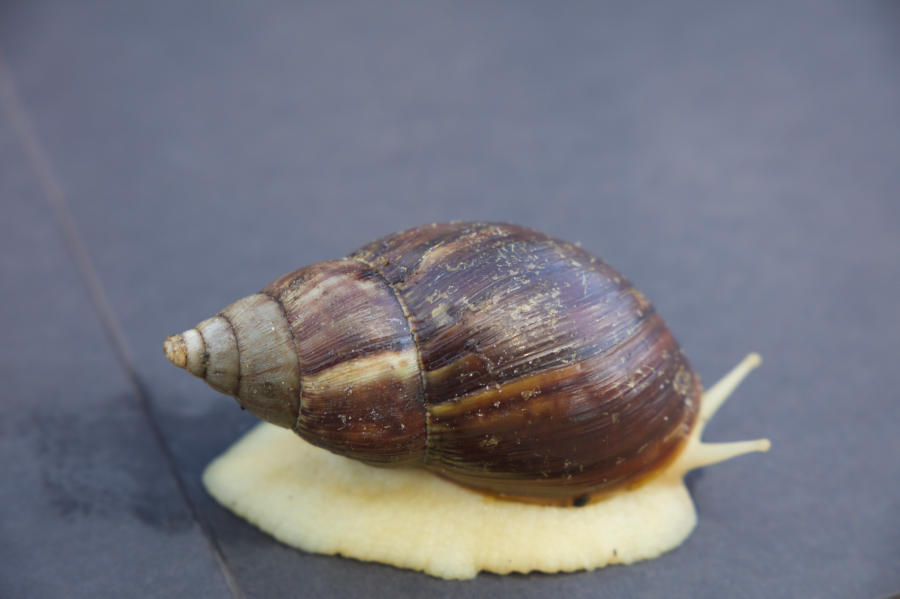NEW PORT RICHEY, Fla. (WFLA) — On Thursday, officials with the Florida Department of Agriculture and Consumer Services are expected to give an update on their efforts to get rid of giant invasive snails. It’s been nearly a month since the Giant African Land Snail was first detected in Pasco County.
As of this week, the Florida Department of Agriculture has collected nearly 2,000 of the destructive creatures. The species is known for eating more than 500 crops, but also stucco and plaster. A quarantine zone has been set up in New Port Richey.
A department representative said the collection process has included both live and dead snail specimens during the treatment process, and that they have not yet found snails outside of the current treatment area. Additionally, the quarantine zone has a treatment area within it, which has both residential and commercial buildings. The giant snails have been detected on both types of properties.
Huge 17-foot and 10-foot pythons captured in Florida with lots of baby snakes On July 14, FDACS found snails at 30 of the 525 properties they’d surveyed for the invasive mollusks. About a week later, snails have been found at 32 properties, while they have examined 661. FDACS said the number of properties testing positive for snails was not increasing as quickly as the number of properties they’ve checked, which they said was good.
While the treatment process continues, the department said snails may flee to neighboring properties that haven’t been hit with the treatment chemicals, metaldehyde. FDACS said the snails can move and lay more eggs. As previously reported, the snails were detected in New Port Richey on June 23.
Quarantine was set up the next day and the eradication effort began. The Giant African Land Snail quarantine zone starts in New Port Richey “at the NW corner of US Highway 19 and Ridge Road, proceed E on Ridge Road, S on Little Rd, W on Trouble Creek Rd. , N on US Highway 19.
” At a previous press briefing on the snail invasion, FDACS Commissioner Nikki Fried urged residents not to try to eat the snails, known to grow between two and eight inches long and for carrying parasites and diseases. “Call us, make sure that you’ve got experts, they carry diseases like meningitis with them, and most importantly, do not eat them,” Fried said previously in Clearwater. “This is not a snail to be put on butter and oil and garlic.
This is not something that you want to touch, this is not something you want to eat. ” Alligator bite incident sends Sarasota man to hospital During the early July briefing, Dr. Greg Hodges, assistant director of the FDACS Division of Plant Industry, said the current population of invasive snails, the third time the mollusks have come to Florida, were cream-colored and may have been brought in as part of the illegal pet trade.
“One thing to note about this particular detection, this population has a very light cream-colored body with a typical dark and mottled brown shell,” Hodges said at the time. “The populations that we dealt with in the previous two eradications had dark grey to brown bodies. This cream colored phenotype is very common in the pet trade in Europe and has been intercepted here in Florida previously with the illegal pet trade.
” FDACS says Floridians who see weird and/or large snails are encouraged to contact the Division of Plant Industry to report the sighting, allowing them to check for any potential spread of the population. The snail hotline number is 1-888-397-1517. .
From: wfla
URL: https://www.wfla.com/news/pasco-county/giant-snails-invade-pasco-county-officials-to-give-update-on-mitigation-efforts/



